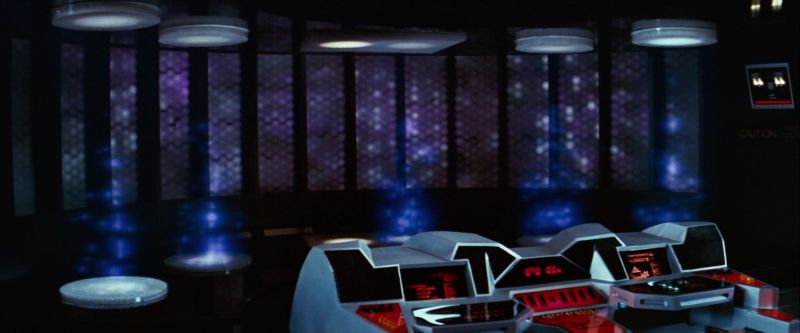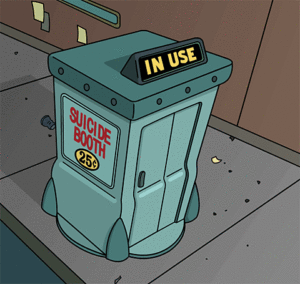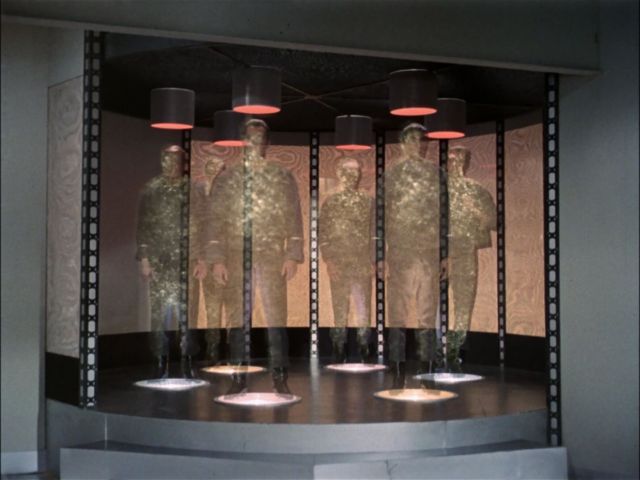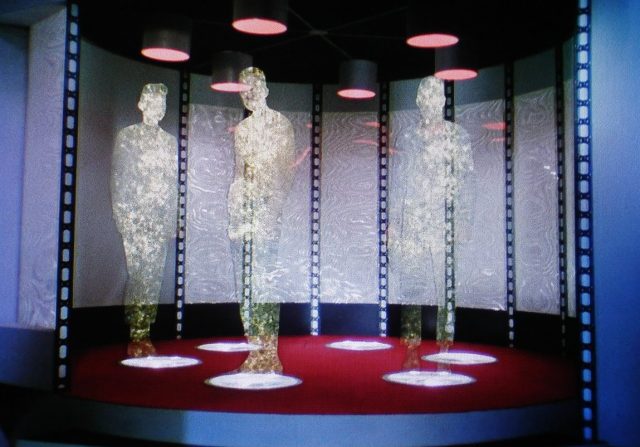
In the 2009 movie Star Trek, Captain Kirk and Sulu plummeted down toward the planet Vulcan without a parachute. “Beam us up, beam us up!” Kirk shouted in desperation. Then at the last second, after a tense scene of Chekov running top speed to the transporter room, their lives were saved moments before they hit the doomed planet’s rocky surface.

But can beaming out save someone’s life? Some would argue that having one’s “molecules scrambled," as Dr. McCoy would put it, is actually the surest way to die. Sure, after you’ve been taken apart by the transporter, you’re put back together somewhere else, good as new. But is it still you on the other side, or is it a copy? If the latter, does that mean the transporter is a suicide box?
These issues have received a lot of attention lately given Trek’s 50th Anniversary last year and the series' impending return to TV. Not to mention, in the real world scientists have found recent success in quantum teleporting a particle’s information farther than before (which isn’t the same thing, but still). So while it seems like Trek's transporter conundrum has never had a satisfying resolution, we thought we’d take a renewed crack at it.
To be clear, our purpose isn’t to get into the nitty-gritty of the science of the transporter. After all, if we could figure out exactly how a transporter works, we could build one. Instead we’ll touch on it only when the science becomes relevant, but—as was the case in our discussion of time travel in Trek—we’ll focus mostly on the transporter’s effects. And those effects have some interesting consequences. After reviewing the evidence, in fact, there might even be some hope that transport isn’t a death sentence and that “beam me up, Scotty” were not Kirk’s famous last words. (Kirk never said those exact words on the show, of course, but you get the idea).

Establishing a lock
Trek has always depicted characters who are hesitant to use the transporter, from Dr. McCoy to the entire crew of Enterprise. "You’re always on the side of, 'those guys are just silly, you gotta trust the future!'" said Jordan Hoffman, a film critic and host of Engage: The Official Star Trek Podcast. "We trust the warp engines and all the other high tech of Star Trek, so why wouldn’t [we] trust the transporter?"
Hoffman points out the first work to express real doubt about the continuity of personhood was the novel Spock Must Die by James Blish, which "played coy" about whether it's really you on the other end of the transporter. To address the questions this raised, a good place to start is by looking at what the transporter actually does.
According to the Star Trek: The Next Generation Technical Manual, when a person steps onto the transporter pad, the computer uses “molecular imaging scanners” to scan his or her body, before the person is converted into a “subatomically debonded matter stream.” In other words, a crew member is taken apart piece by piece, breaking apart the bonds between individual atoms. Then, particles are streamed into a “pattern buffer," where they remain briefly before being sent to their destination.

This sounds an awful lot like death. In fact, it’s even more death-y than conventional death where, after the body’s processes have stopped, the body slowly decomposes. The effect is the same—the pieces of you come apart—the transporter’s just a lot more efficient at it.
Once the matter stream arrives at its destination, the person is somehow “rematerialized” or put back together. While the transporter tends to use the person’s atoms to reconstruct a human, it really doesn’t have to. The machine could use totally different atoms, and the effect would be exactly the same.
In fact, in the Deep Space Nine episode “Our Man Bashir," Captain Sisko and a few other officers are nearly lost during a transporter accident. They beam out from their sabotaged runabout at the last second, but the transporter malfunctions and their patterns must be sent into the station’s computer somehow to save them. Their physical bodies are saved as holographic characters in Dr. Bashir’s holosuite program. Later in the episode, they’re reconstituted using the patterns stored in the holodeck—almost certainly with entirely new atoms.
That sounds an awful lot like a copy—or like a new person. If the transporter is just scanning your data and creating an identical copy somewhere else, then by any reasonable definition, the original person is dead. By analogy, consider a car model. Many cars are produced by the same manufacturer, all from the same design. There’s no way to tell these cars apart, but they’re not the same car.
If that’s the case and the transporter is really a suicide-and-copy machine, then Star Trek’s bright and optimistic future might not be the rosy place we always thought it was. Of course, there’s more to the story than that. For one thing, some might argue this is just semantics. What’s the difference between it being “you” and “not-you” if you’ve passed through the "subatomically debonded" transporter either way?

Measure of a man (or other lifeform)
This particular technicality opens a philosophical can of “gagh,” which is beyond the scope of this article to fully address and may even be partially subjective (and thus fundamentally unresolvable). For one thing, our bodies grow and change over the course of our lives. Cells multiply, die, and are replaced. Even the brain is no exception.
“There is plenty of change in the brain during development, though birth of new neurons seem to be pretty much restricted to being produced in the dentate gyrus after birth,” Patricia Churchland, neuro-philosopher with the University of California, San Diego, told Ars. “But there is pruning back (especially in early adolescence), as well as massive sprouting of the neurons you are born with.”
This makes a person a bit like a paintbrush whose head and whose handle will both be replaced at different times. Is it still the same brush? While the brain is a bit more complex than that, there certainly is quite a bit of overhauling going on across a person’s life. According to Churchland, “The brain grows about [five times] from birth to adolescence. It makes about a million synapses per second in the first two years after birth," she said. "In early development, a child can lose a whole hemisphere without being changed into a new person. Later in development, lesions can have a greater effect on personality, mobility and cognition, depending on the location of the lesion.”
But at least in everyday language, we still consider ourselves to be the same person from birth to death. And whether or not that’s a valid standard by which to consider oneself the same person, for our purposes, we’ll use this standard of everyday language. So, the question we’re really asking is, “Is a transported person still the same person, to the extent that we’re the same people throughout our lives?” This gives us a clearer criterion on which to assess the question of the transporter.
There’s another, more famous version of the paintbrush example: a thought experiment known as the Ship of Theseus. Theseus wants to keep his ship in tip-top shape, so whenever a board rots, he replaces it with a new one and keeps doing so until none of the original planks remain. Is it still the same ship? By our standards, it clearly is. The pieces have been replaced, but there was a continuity in the ship’s structure between them.
If, however, we destroy the ship but mail its blueprints somewhere else and then build a new, identical ship, it’s not the same ship. It’s a separate ship built from the same blueprints. It doesn’t even matter whether you use the same planks or not. So where does the transporter fit in, again?
reader comments
381